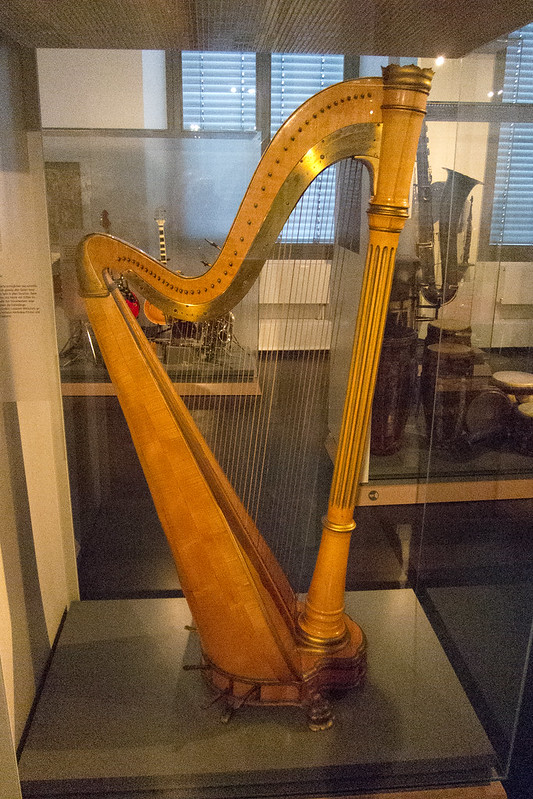New Salem Village re-enactors playing Celtic harps
(Photo credit: Wikipedia)
If you are considering playing or purchasing a harp, you may feel overwhelmed by the different types and choices available. This article will provide a basic explanation of the different models and give you some points to consider before making a purchase or deciding on an instrument.
The pedal harp is sometimes also called a classical, concert, orchestral, or concert grand harp. It usually has between 41 and 47 strings and is typically the largest type of harp. A pedal harp has pedals at the base that allow you to play in different keys without having to restring the instrument. This allows you to play the widest variety of musical styles.
A non-pedal harp is basically a harp without pedals and is sometimes also called a lever, folk, or Celtic harp. Non-pedal harps have levers that let you adjust the instrument to different keys, although the levers do not provide quite as much versatility as pedals do. Lever harps can vary greatly in size, from lap harps to floor models up to 5 feet high.
Harps are usually either strung with wire or nylon. They may also be double, triple, or cross-strung. Double and triple strung harps have 2 or 3 rows of parallel strings, and one hand plucks each row of strings. Cross-strung harps have 2 rows of angled strings that cross over one another. This allows you to reach each set of strings with either hand.
Choosing a harp depends partly on what type of music you like to play. If you prefer classical or jazz, you may want to consider a pedal harp because of its musical flexibility. If you like folk, Celtic, or popular music, a non-pedal harp will probably suit your needs.
While the size of the harp may be a consideration for a child or small adult, smaller is not necessarily better. Lap harps, while smaller, also require you to balance the harp on your lap, and this may be challenging for a smaller person. Actually, with proper posture and sitting height, a child can play a floor harp, even if they can't reach all the strings just yet.
Another, and perhaps the biggest, consideration in choosing a harp is your budget. The cost of a harp varies greatly. Pedal harps are the most expensive. Non-pedal harps are usually less expensive, but of course the larger the harp, the more costly it is.
With so many things to consider, including personal preference, you are the only one who can decide which instrument you prefer. Once you make your decision, enjoy playing your new instrument, and take pride in your musical accomplishments!
|



